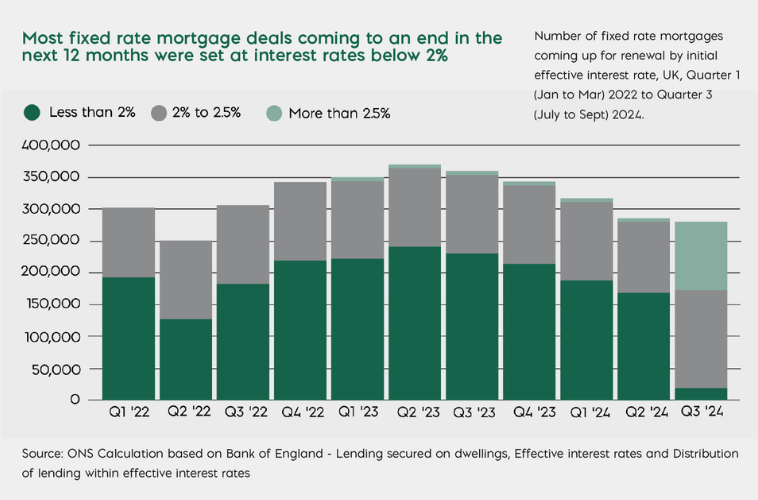
W1 & Marlborough Mid-Year Review and Outlook – June 2023
As we reach the midpoint of 2023, let’s address some key challenges investors face in the current economic landscape.
Inflation remains a concern, especially in the United Kingdom, where it remains stubbornly high compared to other developed markets. Additionally, the allure of cash as a safe haven may not help investors achieve their long-term financial goals. Lastly, the hype around artificial intelligence (AI) raises questions about its potential and whether it presents a lucrative opportunity for investors.
Despite these challenges, financial markets have displayed remarkable resilience, showing progress since the latter part of 2022. Let’s delve into these topics in detail as we review the first half of 2023 and look ahead.
Inflation
Inflation has remained a persistent issue in the United Kingdom, with the latest figures indicating price rises stuck at a high rate of 8.7% in June. This has been disappointing for markets which expected inflationary pressures to start to ease.
Contributing factors to inflation over the last year include elevated energy and food prices. The impact of higher energy costs is evident in fuel prices, which have risen sharply, leading to increased transportation costs and potentially affecting the prices of goods and services.
Similarly, food prices have seen upward pressure due to various factors, such as supply chain disruptions, weather-related challenges, and increased demand. Additionally, global commodity price increases in 2022, including metals and agricultural products, have further contributed to inflationary pressures.
Price rises starting to ease?
However, there are signs that we may see inflation start to fall. Energy prices have started to stabilise at lower levels, as oil production increases and supply chain disruptions ease. Additionally, the base effects from last year’s low inflation numbers are beginning to fade, which may lead to a slowdown in the rate of inflation.
It is worth noting that spending on recreation and culture has been on the rise, driven by pent-up demand as pandemic restrictions ease. However, this increase is likely to be seasonal and we should expect it to moderate as higher mortgage costs impact consumers’ spending power.
Responding to the inflation figures, the Bank of England decided to raise interest rates to 5%, as it aims to curb inflationary pressures by reducing the availability of cheap credit and slowing down consumer spending. As a result, mortgage holders are facing the prospect of higher rates, with many households set to renew fixed-rate mortgages at an average rate of 6% this year.
It’s important to recognise, though, that while mortgage costs are rising, the majority of households do not have mortgages. Moreover, larger household bank deposits are helping consumers cope with the impact of higher mortgage costs.
Overall, managing inflation remains a key challenge for policymakers, and its trajectory will heavily influence the investment landscape in the coming months. What’s worth highlighting is that today, the total mortgage debt as a percentage of UK housing value is just 19% LTV! Household bank deposits are larger than household mortgages (£1.8tn* vs £1.6tn). Those £1.8trn of deposits are starting to earn some interest income, which is helping consumers deal with higher mortgage costs.
Cash is King
Savers are currently experiencing higher interest rates, marking a departure from the prolonged period of low rates. Instant access savings accounts offer rates of 4% or more, while one-year term deposits provide rates of above 5%.
These rates may appear attractive, but it is crucial to consider the long-term impact of cash savings. Even with higher interest rates, the value of cash may drop when adjusted for inflation, ultimately reducing its purchasing power over time.
In contrast, historical data demonstrates that investing in equities has provided returns that outpace inflation. Investing also offers tax-efficient options compared to cash deposits. While maintaining some cash for short-term needs and emergencies is prudent, relying solely on cash savings may lead to poorer financial outcomes in the long run.
Retail investors sometimes fall into common traps, such as investing in money market funds after markets have already begun their rally. In contrast, professional investors, who are aware of market opportunities, often seize the chance to acquire bargains when prices are lower and potential returns are higher. Therefore, despite the allure of high street money market funds, they may not be the most effective means of achieving long-term financial goals.
As history repeats itself, a vast £11.9 billion was paid into cash ISAs in April, the largest ever recorded, on top of £5.8 billion paid in during March. Former fund manager Peter Lynch, author of One Up On Wall Street, once said: “The real key to making money in stocks is not to get scared out of them”. As professional buyers, we see many market opportunities doing very well this year.

Benefits of AI starting to become real
Artificial intelligence is the term used for technology that enables computers to perform tasks that typically require human intelligence, such as decision-making, problem-solving and visual perception.
It is already a part of daily life for many of us. The facial recognition software on Apple iPhones uses AI, so it can recognise faces from different angles and in different lighting. Digital assistants such as Amazon’s Alexa and Apple’s Siri also use AI, enabling them to process data, respond with natural-sounding speech and learn from mistakes.
Artificial intelligence has emerged as a prominent buzzword in today’s markets, with many anticipating that it will drive increased productivity in the years to come. AI has already become integrated into daily life through technologies such as facial recognition and digital assistants. Its potential to revolutionise various industries, including healthcare, education, and entertainment, is immense.
The full extent of AI’s capabilities is difficult to imagine, but if developed and implemented responsibly, it can offer significant benefits and present attractive opportunities for investors. The rise of AI-focused companies, exemplified by industry leaders like Nvidia, highlights the market’s enthusiasm for this transformative technology.

Markets ride the inflationary storm
Despite challenges in the banking sector, concerns about inflation and potential pressures on household spending, financial markets have shown remarkable resilience in recent times.
In the latter part of 2022, markets began to recover from the setbacks caused by the COVID-19 pandemic. Since then, equities have experienced a steady upward trend, supported by better-than-expected corporate earnings and resilience in the economy. Notably, the technology sector has been a standout performer, as companies benefit from the acceleration of digital transformation and the increased demand for technology-driven solutions.
However, market volatility is always a possibility, and investors should remain vigilant and evaluate their portfolios accordingly. Diversification and a long-term perspective are key strategies to navigate the ever-changing market dynamics.
Equities: Stocks arguably defied expectations in the first half of the year, with the S&P 500 notching double-digit returns even as inflation remained elevated, and the US Federal Reserve continued its fastest rate-hiking campaign since the 1980s. The big picture masks some nuances: technology shares, after cratering in 2022, have led index returns, and have led the US stock market to enter a technical bull market – one that’s defined as a 20% rise or more. This means the S&P 500 is now 20% above the low the market hit on October 12th last year.
You are probably thinking, given all the negative headlines, that it’s hard to believe that markets have been able to make headway this year. What’s even more sobering is that markets have been rising since October last year.
Bonds: The slower-than-expected easing in inflation, surprising strength of the labour market and resilient economic activity, have kept the pressure up on central bankers. As a result, the peaks in interest rates have been much higher than had been anticipated in January. The hiking cycle is expected to last into the second half of this year, with further increases likely from the US Federal Reserve, Bank of England and the European Central Bank. That said, a pivot to an easing stance appears to be on the cards in 2024, with interest rate cuts skewed towards the latter half of the year.
Inflation, interest rates near peak
Our outlook for markets this year has become more constructive. Although inflation remains persistently high, we have observed a gradual decline, and economic growth has shown resilience.
This favourable backdrop is expected to support equity markets and facilitate further progress. Additionally, central banks worldwide are approaching the end of their hiking cycles, which is positive news for bond markets.
Throughout the year, we have been gradually increasing our exposure to equity markets after adopting a more defensive positioning last year. We have identified specific areas of the market that experienced significant sell-offs in 2022, with technology companies in the US being a prime example. Consequently, we have been actively adding to this sector.
In equity assets, one area where we are overweight is Japanese equities. We believe that the market is undervalued relative to other regions, and presents an attractive investment opportunity. Furthermore, there is a strong push to improve company behaviour in Japan, which has the potential to unlock additional shareholder value. As an example, in Japan, we added the M&G Japan Fund, which we like for the following reasons:
Experienced management team: A Fund Manager change in 2019 saw Carl Vine and David Perrett appointed as Fund Manager and Deputy Fund Manager for the M&G Japan fund and the M&G Japanese Smaller Companies fund as well as co-head of Asian equities.
David and Carl have a wealth of experience and have been working together for a long time. This reduces the element of key person risk. They also have access to a sizeable, experienced team, each with analytical responsibilities for the team’s curated investment universe. A huge coup in October 2022 was the appointment of Dr Yanagi as Deputy President of M&G Japan; he is a renowned figure in the corporate governance space in Japan and is a key differentiator for the fund.
Strong track record: The M&G Japan Fund has a strong track record of outperforming since the managers took charge, and had delivered a return of 17% over the last year compared to a peer group average return of 12%.
Diversified portfolio: Investing in the M&G Japan Fund provides you with exposure to one of the world’s major economies. Japan is known for its technological innovation, strong manufacturing sector, and global brands. By investing in the M&G Japan Fund, you can participate in the growth potential of Japanese companies across various sectors.
Considering the declining inflation and that interest rates are nearing or at, their peak, we have adjusted our fixed income portion to a neutral duration position. This means that we are neither biased towards short duration nor long duration bonds, but have positioned ourselves neutrally across the fixed income spectrum. Our portfolio adjustments reflect our assessment of the current market conditions and our future expectations.
We aim to strike a balance between capitalising on potential market opportunities and managing risks effectively. It is important to note that our investment decisions are guided by thorough research, careful analysis, and a disciplined approach to portfolio management. As always, our team closely monitors market developments and adjusts our strategies accordingly. We remain committed to delivering strong, risk-adjusted returns and ensuring that our portfolios are well-positioned to navigate changing market dynamics.
Bumps in the road ahead
Looking ahead, geopolitical factors, such as trade tensions and shifts in government policies could introduce additional challenges and uncertainties. Rising interest rates, as central banks respond to inflationary pressures, may affect borrowing costs for individuals and businesses, potentially impacting consumption and investment.
Additionally, the continued development and adoption of new technologies, including AI, clean energy and biotechnology, may create new investment opportunities. We will remain vigilant, while also looking for the opportunities that represent themselves in markets. As an example, small caps are out of favour and an area we are doing a lot of work on.
Challenges vs Opportunities
The investment landscape in the second half of 2023 presents both challenges and opportunities. Inflation remains a concern, particularly in the United Kingdom, where it has remained stubbornly high. Cash, while offering attractive short-term interest rates, may not be the most effective means of achieving long-term financial goals due to its potential to lose value against inflation.
However, the rise of artificial intelligence presents exciting prospects for investors, as it continues to revolutionise various industries. Financial markets have displayed resilience, recovering from the setbacks caused by the pandemic, and showing steady upward trends. Nonetheless, geopolitical factors and rising interest rates may introduce uncertainties, emphasising the importance of staying informed and partnering with an experienced and well-respected investment solutions provider.
By understanding these challenges and opportunities, we look to position ourselves to navigate the ever-changing economic landscape and make informed decisions for our clients’ financial futures.
* – £1tn = £1,000,000,000,000 or £1012
Risk Warnings
Capital is at risk. The value and income from investments can go down as well as up and are not guaranteed. An investor may get back significantly less than they invest. Past performance is not a reliable indicator of current or future performance and should not be the sole factor considered when selecting funds. The Fund invests for the long-term and may not be appropriate for investors who plan to take money out within five years. Tax treatment depends on individual circumstances and may change in the future.








